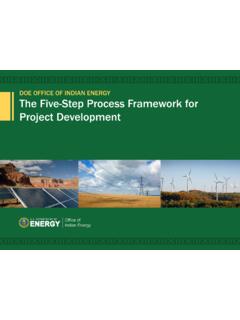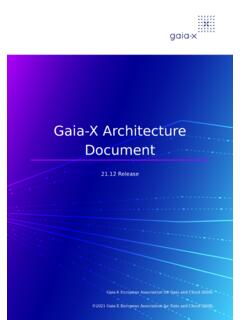Transcription of Handbook on Microgrids for Power Quality and …
1 Handbook ON Microgrids . FOR Power Quality . AND connectivity . JULY 2020. ASIAN DEVELOPMENT BANK. Handbook ON Microgrids . FOR Power Quality . AND connectivity . JULY 2020. ASIAN DEVELOPMENT BANK. Creative Commons Attribution IGO license (CC BY IGO). 2020 Asian Development Bank 6 ADB Avenue, Mandaluyong City, 1550 Metro Manila, Philippines Tel +63 2 8632 4444; Fax +63 2 8636 2444. Some rights reserved. Published in 2020. ISBN 978-92-9262-253-4 (print); 978-92-9262-254-1 (electronic); 978-92-9262-255-8 (ebook). Publication Stock No. TIM200182-2. DOI: The views expressed in this publication are those of the authors and do not necessarily reflect the views and policies of the Asian Development Bank (ADB) or its Board of Governors or the governments they represent.
2 ADB does not guarantee the accuracy of the data included in this publication and accepts no responsibility for any consequence of their use. The mention of specific companies or products of manufacturers does not imply that they are endorsed or recommended by ADB in preference to others of a similar nature that are not mentioned. By making any designation of or reference to a particular territory or geographic area, or by using the term country . in this document, ADB does not intend to make any judgments as to the legal or other status of any territory or area.
3 This work is available under the Creative Commons Attribution IGO license (CC BY IGO). By using the content of this publication, you agree to be bound by the terms of this license. For attribution, translations, adaptations, and permissions, please read the provisions and terms of use at #openaccess. This CC license does not apply to non-ADB copyright materials in this publication. If the material is attributed to another source, please contact the copyright owner or publisher of that source for permission to reproduce it. ADB cannot be held liable for any claims that arise as a result of your use of the material.
4 Please contact if you have questions or comments with respect to content, or if you wish to obtain copyright permission for your intended use that does not fall within these terms, or for permission to use the ADB logo. Corrigenda to ADB publications may be found at Notes: In this publication, $ refers to United States dollars. ADB recognizes China as the People's Republic of China. Cover design by Kookie Trivi o. Photo credits on the cover, clockwise from left: Transmission lines: Energy Sector Development Investment Program in Afghanistan (photo by Jawad Jalali); Wind farm: 150-Megawatt Burgos Wind Farm Project in the Philippines (ADB); Battery: Solar-Wind Hybrid Project site in Pakistan (photo by Nasr ur Rahman); Light bulb: Power Transmission and distribution Project in Afghanistan (ADB).
5 Electric tricycle: Mitigation of Climate Change through Increased Energy Efficiency and the Use of Clean Energy in the Philippines (ADB); Controller: Solar Minigrid Pilot Project in Nepal (photo by C. Lao Torregosa). Contents Tables, Figures, and Boxes v Foreword vii Acknowledgments viii Abbreviations ix Executive Summary xi 1 microgrid Technologies 1. Overview 1. Applications and Configurations 3. Benefits and Barriers 7. General Benefits 7. Drivers by Application Type 10. Barriers 10. Relevance of Grid-Connected Microgrids to Developing Countries 14.
6 Components of a microgrid 16. Local Generation 16. End-Use Loads and Demand-Side Energy Management 17. Storage 21. microgrid Monitoring and Control System 22. Utility interconnection 22. Other Components 22. microgrid Types by Design Architecture 26. Categorized by Type of microgrid Control Approach Centralized vs. Decentralized 26. Categorized by Type of Power Technology Alternating Current vs. Direct Current vs. Hybrid 30. Design of a microgrid 34. Phases in the Implementation of microgrid Projects 34. Design Parameters 36. Design Software 38.
7 Product Selection 38. Capital Costs 38. iv Contents microgrid Operations and Maintenance 39. Transition Between Grid-Connected and Islanded Modes 39. Maintaining microgrid System Stability and Synchronous Operation 39. Faults 40. Operational Costs 40. Maintenance 40. 2 Business Models and Financial Analysis 45. Business Model for Grid-Connected Microgrids (Including Technology, Financing, Stakeholders) 45. Business Model Evaluation and Selection 46. Financial Analysis 47. Financial Analysis Methodology for Up-Front Capital Investment Model and Renewable Energy Service Company 49.
8 Inputs for Financial Analysis Model for Up-Front Capital Investment Model 51. Inputs for Financial Analysis Model for Renewable Energy Service Company Model 52. Economic or Cost Benefit Analysis 53. microgrid Policies and Regulations in Asia 53. 3 Future Development 63. Role of Microgrids in the Electricity Ecosystem of the Future 63. Decarbonization, Digitalization, Decentralization, and Non-Wires Solutions 63. The Flip Side: A Case for Continued Addition of Transmission Capacity 65. Microgrids : Key Relevance to the Transportation Sector 65. Relevance of Microgrids to the Current Power System Situation in ADB Developing Member Countries 66.
9 Approaches to Promote Grid-Connected Microgrids and Replicate Pilots 69. Interconnected Microgrids 71. Areas for Additional Technical Research 71. Transactive Energy 72. Peer-to-Peer Energy Trading 73. Blockchain Technologies 73. Internet of Things, Data Analytics, and Artificial Intelligence 76. APPENDIXES 78. 1 Main Technologies of Renewable Distributed Generators 78. 2 Main Technologies of Nonrenewable Distributed Generators 79. 3 Main Technologies of Storage Systems Used in Microgrids 80. 4 Standards for Alternating Current and Direct Current Microgrids 81.
10 5 Alternating Current and Direct Current microgrid Control Strategies 83. 6 Transactive Energy Case Studies Summary 84. 7 Blockchain Smart Contracts 85. 8 Blockchain microgrid Use Case 86. 9 Bottom-Up Decision-Making Process on Using Blockchain 87. 10 Business Models Detailed Description 88. References 94. Tables, Figures, and Boxes Tables 1 Drivers by microgrid Types 10. 2 microgrid Technical and Operational Challenges 12. 3 Characteristics of Common microgrid Generation Sources 17. 4 Key Differences between Centralized and Decentralized microgrid Control 29.













